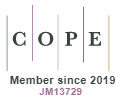Mapping: A Speculative and Creative Design Tool
DOI:
https://doi.org/10.15415/cs.2015.31001Keywords:
Mapping, Design, Design Research, Architecture, Landscape ArchitectureAbstract
Mapping is a technique used to record and represent information graphically. In the studios made forarchitecture and landscape architecture, mapping is usually conducted at the Inventory-making and Analysis stage. Data from the site is gathered and documented for further investigation. However, mapping can also become a creative tool to ‘reveal’ certain things or invisible processes. It can encourage the designers to speculate the site and the design from different perspectives and at multiple scales. This paper discusses some mapping projects that have been explored by the authors through their research projects. The aim of this paper is to recommend mapping as a creative and speculative design tool that can make data more engaging to design thinking.
Downloads
References
[2] BOOTH, N. K. (1983) Basic Elements of Landscape Architectural Design. New York: Elsevier.
[3] BUSTAMANTE, C. T. (2008) Reformulating Urban Landscapes: Figure-ground Maps. In Proceedings from the Subtropical Cities Conference. Available from: http://works.bepress.com/ctorresb/2. [Accessed: 16 April 2015]
[4] CAQUARD, S., & CARTWRIGHT, W. (2014) Narrative cartography: From mapping stories to the narrative of maps and mapping. The Cartographic Journal. 51(2). p.101–106.
[5] CARERI, F. (2002) Walkscapes. Barcelona: Gustavo Gili.
[6] COLLINS, H. (2010) Creative Research: The Theory and Practice of Research for the Creative Industries. Lausanne: AVA Publishing SA.
[7] CORNER, J. (2011) The Agency of Mapping: Speculation, Critique and Invention. In KITCHIN, R. & DODGE, M. (eds.) The Map Reader: Theories of Mapping Practice and Cartographic Representation . Chichester, UK: Wiley-Blackwell
[8] CRAWHALL, N. (2003) Giving New Voice to Endangered Cultures. Santo Domingo: UNESCO
[9] DENSCOMBE, M. (2007) The Good Research Guide: for small-scale social research projects. Maidenhead: McGraw-Hill.
[10] GOLICNIK, B., & WARDTHOMPSON, C. (2010) Emerging relationships between design and use of urban park spaces. Landscape and Urban Planning. 94(1). p.38–53.
[11] GROAT, L. & WANG, D. (2013) Architectural Research Methods (2nd ed.). New Jersey: John Wiley & Sons, Inc.
[12] HARMON, K. (2004) You Are Here: Personal Geographies and Other Maps of the Imagination. New York: Princeton Architectural Press.
[13] HARMON, K., & CLEMANS G. (2009) The Map as Art: Contemporary Artists Explore Cartography. New York: Princeton Architectural Press.
[14] HOLLOWAY, I., BROWN, L., & SHIPWAY, R. (2010) Meaning not measurement: Using ethnography to bring a deeper understanding to the participant experience of festivals and events. International Journal of Event and Festival Management. 1. p.74–85.
[15] LYNCH, K. (1960) The Image of the City. Cambridge: MIT Press.
[16] MATHUR, A. & DACUNHA, D. (2009)SOAK: Mumbai in an Estuary. New Delhi: Rupa & Co.
[17] MCHARG, I. (1992) Design with Nature. New York: John Wiley.
[18] MOGEL, L. & BHAGAT, A. (2010) An Atlas of Radical Cartography. Los Angeles: Journal of Aesthetic & Protest Press.
[19] PILLAI, J. (2013) Cultural Mapping. Petaling Jaya: Strategic Information and Research Development Centre.
[20] SADLER, S. (1998) The Situationist City. Cambridge, MA: MIT Press.
[21] SIMONDS, J. O., & STARKE, B. W. (2006) Landscape architecture: A manual of environmental planning and design. New York: McGraw-Hill.
[22] STEINER, F. (1991) The Living Landscape: An Ecological Approach to Landscape Planning. New York: McGraw-Hill.
[23] TREIB, M. (1980) Mapping Experience (Design Quarterly). Minnesota: Walker Art Center
[24] TUFTE, E. R. (1990) Envisioning Information. Connecticut: Graphics Press.
[25] WASSERMAN, K. (2007) The Book as Art: Artists’ Books from the National Museum of Women in the Arts. New York: Princeton Architectural Press.
[26] WILEY, D. (2008) A walk about the city: Stalker, the transurbance and the city map. Canadian Journal of Cultural Studies.
[27] ZAKARIYA, K. (2012) Fleeting feast: Mapping and accommodating temporary markets (Unpublished doctoral thesis). RMIT University Melbourne, Australia.
[28] ZEISEL, J. (1984) Inquiry by Design: Tools for Environment-Behavior Research. New York: Cambridge University Press.
Downloads
Published
Issue
Section
License
Articles in the Journal of Creative Space (Creat. Sp.) by Chitkara University Publications are Open Access articles that are published with licensed under a Creative Commons Attribution- CC-BY 4.0 International License. Based on a work at https://cs.chitkara.edu.in. This license permits one to use, remix, tweak and reproduction in any medium, even commercially provided one give credit for the original creation.
View Legal Code of the above-mentioned license, https://creativecommons.org/licenses/by/4.0/legalcode
View Licence Deed here https://creativecommons.org/licenses/by/4.0/
 |
Journal of Creative Space by Chitkara University Publications is licensed under a Creative Commons Attribution 4.0 International License. Based on a work at https://cs.chitkara.edu.in/ |







